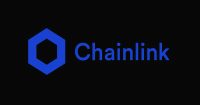- The HKMA’s Fintech 2030 strategy introduces the “DART” framework to modernize Hong Kong’s fintech landscape.
- Core initiatives include AI integration, RWA tokenization, and quantum-safe cybersecurity systems.
- Project Ensemble and e-HKD will drive blockchain-based transactions and cross-border payment innovation.
The Hong Kong Monetary Authority (HKMA) introduced its “Fintech 2030” strategy during the Hong Kong FinTech Week 2025. The new plan outlines a comprehensive roadmap for strengthening the city’s position in global fintech development. Marking a decade of the event, the HKMA and InvestHK used the occasion to present new directions for Hong Kong’s digital finance future. The announcement focused on building long-term stability, security, and cross-border collaboration in financial technology.
Four Pillars Under the DART Framework
The HKMA structured the “Fintech 2030” initiative under four main pillars known as “DART.” Each pillar includes targeted programs intended to improve Hong Kong’s fintech environment and support the financial sector’s continued modernization.
The first pillar, Data and Payment Infrastructure, aims to establish scalable systems for data exchange and cross-border payment connectivity. This infrastructure will allow banks and enterprises to access secure data flows, improve trade finance processes, and enable smoother cross-border remittances.
The second pillar, the AI² Strategy, focuses on the responsible adoption of artificial intelligence within the financial system. The HKMA plans to develop shared AI infrastructure and create specialized financial models in partnership with local and international institutions. The approach seeks to improve service efficiency, personalization, and transparency while maintaining strong public accountability in automated financial operations.
Strengthening Cyber and Quantum Resilience
The third area of focus is Resilience in Business, Technology, and Quantum Systems. The HKMA is introducing a cybersecurity certification framework tailored to fintech firms and an early detection system for potential threats.
To prepare for the future of quantum computing, the authority also intends to promote the development of post-quantum cryptography and quantum-safe networks that secure financial services against evolving risks. The fourth pillar centers on Tokenization of Finance, emphasizing real-world asset (RWA) tokenization. The HKMA will continue issuing tokenized government bonds and explore tokenized Exchange Fund papers.
Settlements for these assets will rely on blockchain technology using the e-HKD, tokenized deposits, and regulated stablecoins. Through Project Ensemble, the HKMA will pilot real-value blockchain transactions and foster partnerships to expand tokenization use cases. Mr. Eddie Yue, HKMA Chief Executive, said collaboration between public and private sectors remains crucial as Hong Kong advances toward 2030.

